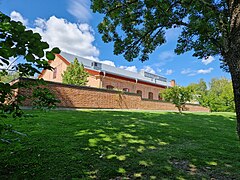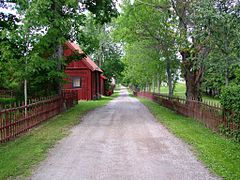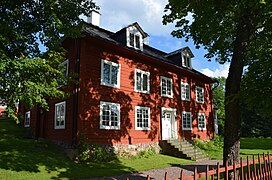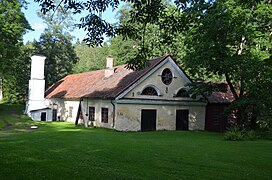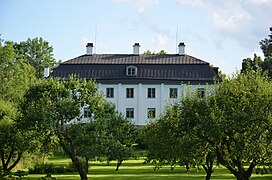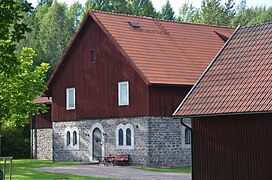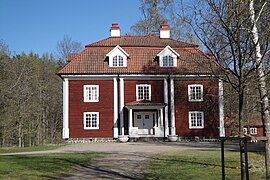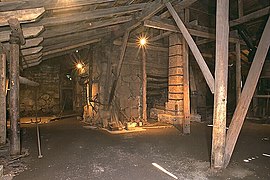|
Engelsberg Ironworks
Engelsberg Ironworks (Swedish: Engelsbergs bruk) is an ironworks in Ängelsberg, a village in Fagersta Municipality in Västmanland County, Sweden. It was built in 1681 by Per Larsson Gyllenhöök (1645–1706) and developed into one of the world's most modern ironworks in the period 1700–1800. It is listed as a UNESCO World Heritage Site since 1993. NameEngelsberg Ironworks is named after Englika. Englika, who was born in Germany, began producing iron in Engelsberg in the 14th century.[1] HistoryThe history of iron production in the region dates back to at least 13th century. The local peasants both mined the ore and produced the iron using primitive furnaces.[2] In the end of the 16th century more modern production methods were introduced in Engelsberg and production volumes increased substantially in the following decades.[2] The mill, which historically belonged to the Västervåla parish and Norberg, was built in 1681[3] by the county sheriff Per Larsson Höök (1645–1706). By then, ironworking had already been carried out on the site for a long time by miners.[4] DescriptionThe preserved buildings include a manor house, the inspector's house and the smelting house with a blast furnace.[2] UNESCO World Heritage SiteEngelsberg Ironworks is a UNESCO World Heritage Site. It was added to the list in 1993.[5] The UNESCO comments were:
Gallery
References
External linksWikimedia Commons has media related to Engelsbergs bruk.
|
||||||||||||||||||
Portal di Ensiklopedia Dunia


